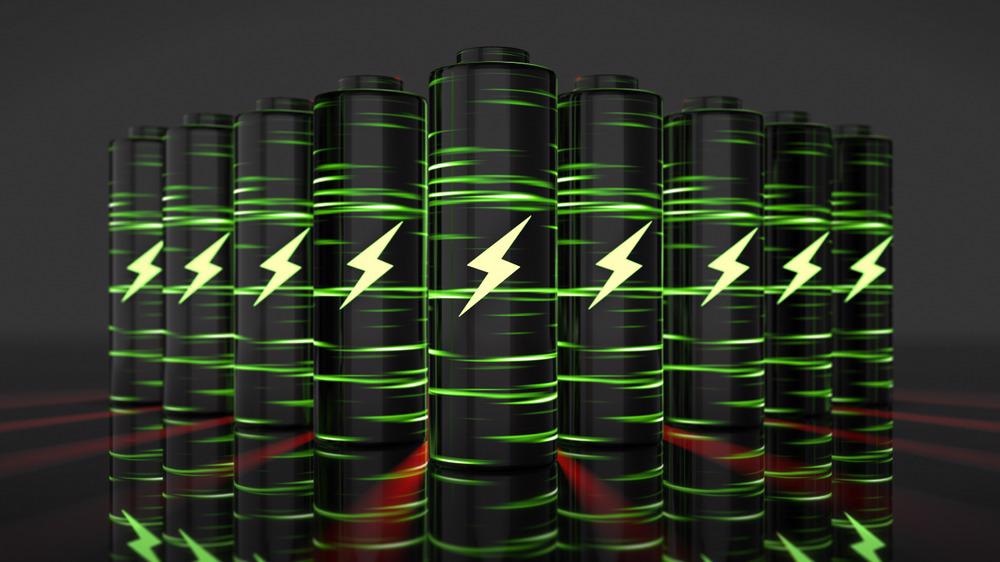In a recent study published in the journal Electrochimica Acta, researchers from China developed a 3D carbon-coated stable silicon/graphene/CNT composite to overcome the limitation of volume expansion of silicon lithium-ion batteries during the charge-discharge process to a certain extent.

Study: Poly-dopamine carbon-coated stable silicon/graphene/CNT composite as anode for lithium-ion batteries. Image Credit: Immersion Imagery/Shutterstock.com
Role of Enhanced Anode in Lithium-Ion Batteries
With the environmental degradation and global energy crisis, increasing the use of clean, renewable energy is critical. Developing high-efficiency energy storage power plants and energy storage batteries is crucial for resolving the energy problem.
The lithium-ion battery, with benefits such as extended cycle life, high energy density, and environment-friendliness, is extensively used in a wide range of applications. The anode material's performance is critical to enhancing the energy density of lithium-ion batteries manufactured using silicon as the primary material.
Issues such as severe pulverization and subsequent loss of contact with the current collector result in low cycle stability and rapid capacity decay in silicon during the discharge or charge of lithium-ion batteries.
The researchers of this study developed a 3D carbon-coated silicon/graphene/CNT composite (C@Si/GN/CNT/PDA-C) using electrostatic self-assembly, dopamine self-polymerization, and high-temperature carbonization in an attempt to resolve issues in the lithium-ion anode to a certain degree.
Methodology
Four composites - cetrimonium bromide or CTAB@Si (C@Si), C@Si/CN/CNT, C@Si/GN/CNT/PDA-C, and C@Si/PDA-C, Si/PDA-C - were synthesized in the study.
To develop CTAB@Si (C@Si), SiNPs were dispersed in deionized water and constantly mixed, then CTAB aqueous solution was added to the SiNP suspension while rapidly stirring and sonicating the solution for one hour, followed by five centrifugal washing cycles to remove the excess CTAB.
To produce the C@Si/GN/CNT/PDA-C composite, C@Si, graphene, and carbon nanotubes (CNT) were disseminated in tris buffer to produce a suspension, followed by continuous stirring during which dopamine (DA) was added. Following that, the homogeneous ploy-dopamine carbon layer (PDA-C)-coated C@Si/CN/CNT was filtered, washed with deionized water, and vacuum dried. Using a similar method, C@Si/PDA-C, Si/PDA-C, and Si/GN/CNT/PDA-C were prepared to compare the results.
Results
X-ray diffraction patterns demonstrated that the silicon structure was not disrupted by the CTAB alteration, PDA coating, or heat treatment. Due to graphene sheets with highly conductive and graphitized carbon, graphite and crystal planes were also identified at 26.4o and 42.2o in C@Si/GN/CNT/PDA-C.
Raman measurements were performed to ascertain the structure of the composites. The comparatively low intensity of the D and G bands in the Raman spectra of C@Si/PAD-C suggests that the C@Si/PAD-C has a low percentage of disordered carbon components.
Further Reading: Multiphase Gradient Lithiation on Carbon Paper Electrodes in High-Energy Batteries
The silicon content in these composites was confirmed by thermogravimetric analysis (TGA). The TGA curves of Si/PDA-C and C@Si/PDA-C show a substantial decrease when heated from 500 oC to 620 oC, owing to the oxidation of the coated carbon layers. The TGA findings demonstrate that the C@Si/PDA-C composite contains somewhat fewer SiNPs than the Si/PDA-C composite due to the low quantity of carbon produced by CTAB following heat treatment.
X-ray photoelectron spectroscopy (XPS) analysis of surficial chemical configurations of the C@Si/GN/CNT/PAD-C revealed that the PDA-C layer was effectively coated on the composite. Scanning electron microscope images demonstrated that PDA-C is coated over SiNPs to prepare Si/PDA-C composite in Si/PDA-C, C@Si/PDA-C, Si/GN/CNT/PDA-C, and C@Si/GN/CNT/PDA-C.
Zeta potential measurements on SiNPs and CTAB@Si were used to investigate the influence of electrostatic surface alteration on the surface charge characteristics of nano-silicon. Results show that the surface of SiNPs was easily oxidized to form an oxide layer resulting from high surface energy.
The initial five cyclic voltammetry (CV) curves of C@Si/GN/CNT/PDA-C showed that the formation of solid electrolyte interphase (SEI) correlates to a broad reduction peak in the first cycle, which then dissipates in the second cycle. The injection of Li+ to generate amorphous phrases of LixSi alloy causes a cathodic peak at approximately 0.2 V in future cycles.
The long cycling performance of the C@Si/GN/CNT/PDA-C electrode at different current densities of 0.1 A g-1 and 1 A g-1 demonstrates that the electrode still delivers a stable reversible capacity of 1306 mAh g-1 with a high capacity retention of 68.1% after 100 cycles, even at a higher current density of 1 A g-1.
Conclusions
The researchers prepared 3D C@Si/GN/CNT/PDA-C composite using high-temperature pyrolysis processing and self-assembly. Compared to the other two composites (C@Si/PDA-C and Si/GN/CNT/PDA-C), the C@Si/GN/CNT/PDA-C composite showed better performance. The prepared composite can be ideal for producing better-performing lithium-ion batteries.
Disclaimer: The views expressed here are those of the author expressed in their private capacity and do not necessarily represent the views of AZoM.com Limited T/A AZoNetwork the owner and operator of this website. This disclaimer forms part of the Terms and conditions of use of this website.
Source:
Fangfang Wang, Song Lin, Xuesong Lu, Ruoyu Hong, Huiyong Liu, Poly-dopamine carbon-coated stable silicon/graphene/CNT composite as anode for lithium-ion batteries, Electrochimica Acta (2021), https://www.sciencedirect.com/science/article/pii/S0013468621019927?via%3Dihub